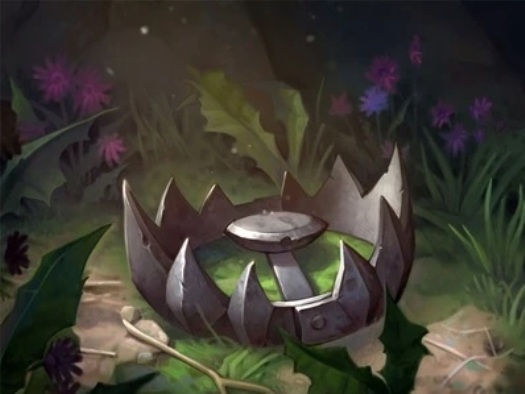Animal Trapping (sage ability)
Animal Trapping is an amateur-status sage ability in the study of Hides & Skins, involving the capture of wild animals using various devices or techniques, specifically traps or snares. The ability is primarily used for the purpose of pelt or skin harvesting. Animal trapping gives a deep understanding of animal behavior, habitat, and tracking skills to select optimal trap locations.
Knowledge of trap types and their appropriate use is also had by the character, ranging from simple deadfalls and snares to more complex live-capture devices. The ability includes expertise in baiting and lure placement. Trappers possess patience and diligence, as traps must be checked regularly to reduce animal suffering and produce the best skins or pelts. Additionally, the terrains that must be navigated are often rugged and the weather conditions harsh, where the best sources are located.
Setting Traps
The best time for animal trapping comes in the late summer and early fall, when animals, including bears, are actively foraging and building up fat reserves for the coming winter. This makes them more likely to be attracted to baits and lures. As well, the fur of many animals is at it's prime in the fall; trappers aim to catch animals before their fur starts to molt or degrade due to winter conditions.
As leaves and undergrowth start to fall, or early snows fall, it's easier to identify the best places where traps should be set. Body-gripping traps consist of a frame and jaws that are designed to remain open until tripped by an animal attempting to pass through the trap. The character sets the trap size for the target animal, positions the trap and sets the trigger. Common bait for weasel or rodent species include fish or red meat. The process of setting a small trap and reasonably concealing it is 2-5 rounds (5d6 action points (AP), rolled randomly).
The same basic premise works for bear traps and the like, though these are heavier and usually trap-setting tongs are used to keep the trap from closing on the trapper's hands, should an error cause the trap to spring unexpectedly closed. The time needed to set is tripled (15d6 AP).
Most trappers try for just two or three types of animal, as each requires three traps to produce a reasonable chance at obtaining a decent yield — and since traps are heavy and expensive, and must be hauled deep into the wilderness to obtain pelts, and cannot be replaced if they're broken, it's best to take a minimal number. Due to the weight and cumbersome shape, more than one bear trap isn't practical.
Setting Snares
While easier to manage, and obviously less trouble to carry in and out of the bush (and sometimes the materials for making a snare will be at hand), snares are notoriously less reliable and require about the same amount of time to set up and check. Using snares gives a penalty of -2 to the number of animals trapped, applied to the yield numbers provided below.
Yield
During a season, or three month period, using three traps for a specific species of weasel or rodent, the number of pelts obtained is set by a base number of 1-6, +1 for every 8 points of knowledge in the study or specifically the ability, above 10. For example, a trapper with 31 points of knowledge would catch 3-8 pelts a season. This assumes the traps being checked and regularly moved, requiring 1 hour per trap each day.
The number of bears, wolves or other large animals that can be caught in a season is less, in part due to the greater intelligence of the animal. The base number per season is 0-2 (d3-1). This is increased by +1 for every 18 points of knowledge above 10, which should indicate the difficulties involved. A different trap is still needed for each kind of animal desired; though a bear trap will catch a wolf, say, the likelihood is that the wolf will be injured by the trap and will yet get free before it can be harvested.
Other Game
Larger traps can be used to catch humanoids, for those wishing to use their traps in an applicable D&D purpose. Because humanoids are smarter, they're entitled to a saving throw if they enter a combat hex that includes a bear or wolf trap. Failing the saving throw causes damage — 1-6 hit points for a bear trap and 1-4 for a wolf trap. If the trap succeeds in stunning the victim (and this is unlikely with levelled persons), then the victim's leg is caught and requires an expenditure of 7-10 AP to get free. These can be variously shared with someone else who helps.
Since animal trappers have little experience using a snare large enough to catch a humanoid, the sage ability doesn't allow for this.
